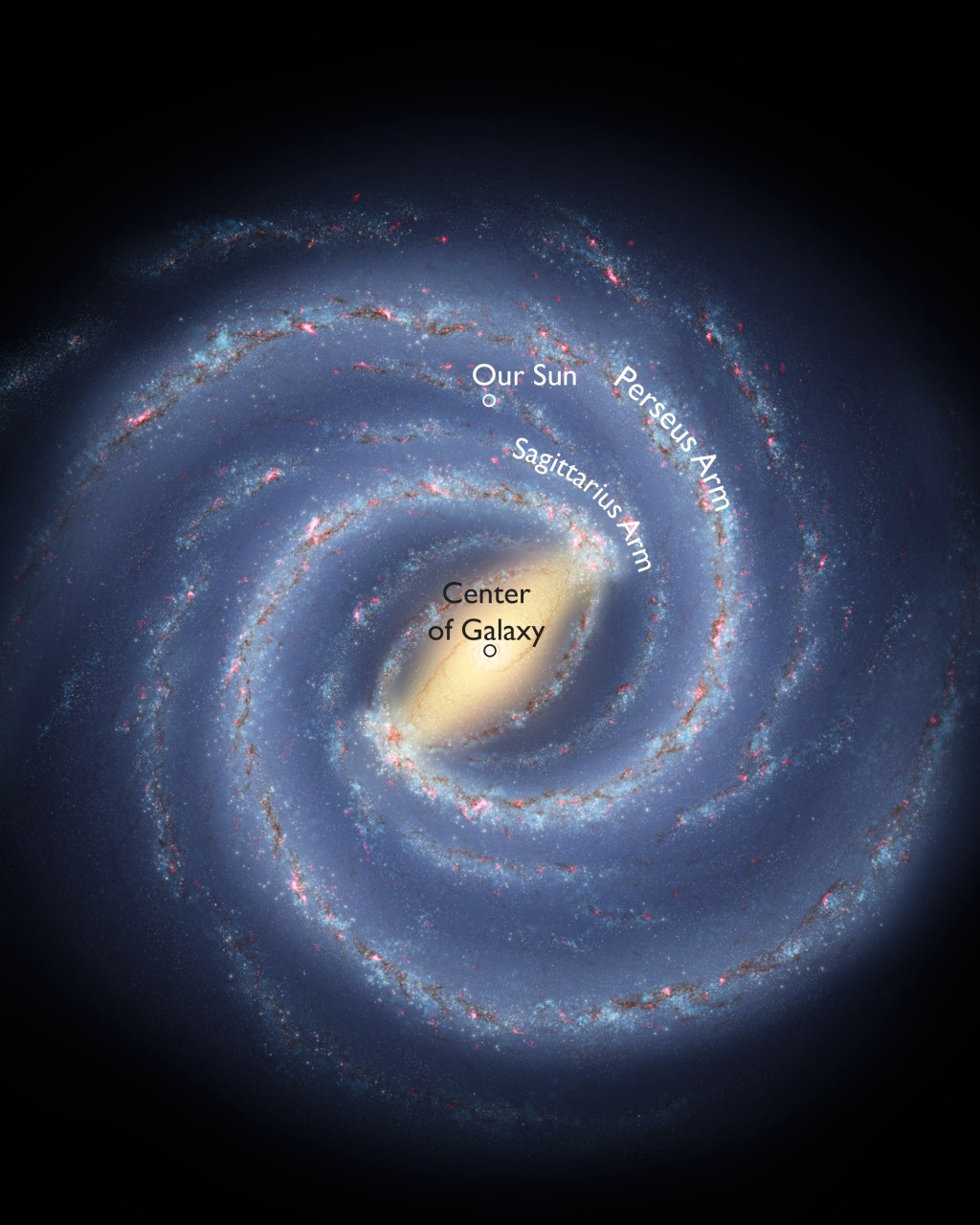advanced: the milky way
-

How Did the Milky Way Form?
Over the course of my last eight posts, we’ve covered just about everything there is to cover about our home galaxy — or, well, at least the basics. We’ve explored how astronomers first discovered what that incredible, milky stream of…
-

Exploring the Milky Way’s Nucleus
Here is an edge-on illustration of our Milky Way Galaxy. (Keep in mind that the disk actually stretches quite a bit farther out from the budge than is apparent in this illustration. Proportionally, its full diameter makes its thickness less…
-

What Are Spiral Arms?
Probably the most spectacular feature of our Milky Way galaxy is its spiral arms. We can’t get a probe far enough out yet to take a galactic selfie, but astronomers are reasonably sure that we live in a spiral galaxy.…
-

Exploring the Milky Way’s Spiral Arms
The Milky Way — our home galaxy — is a spiral galaxy, a classification I often describe as pinwheel-shaped. The main difference between a spiral galaxy’s shape and a pinwheel’s shape is that spiral galaxies, like the Milky Way, only…
-

How Massive is the Milky Way?
Over centuries of philosophy and research, through the times of the classical astronomers to Galileo’s observations of the Milky Way, humanity’s understanding of our universe has evolved from a simple model of the sun and planets to a vast wheel…
-

How Big is the Milky Way?
How big is our galaxy, anyway? And more than that — how do we know? Consider that we can’t really take a photo like this of our galaxy. We’re inside it, and space travel has not advanced to the point…

